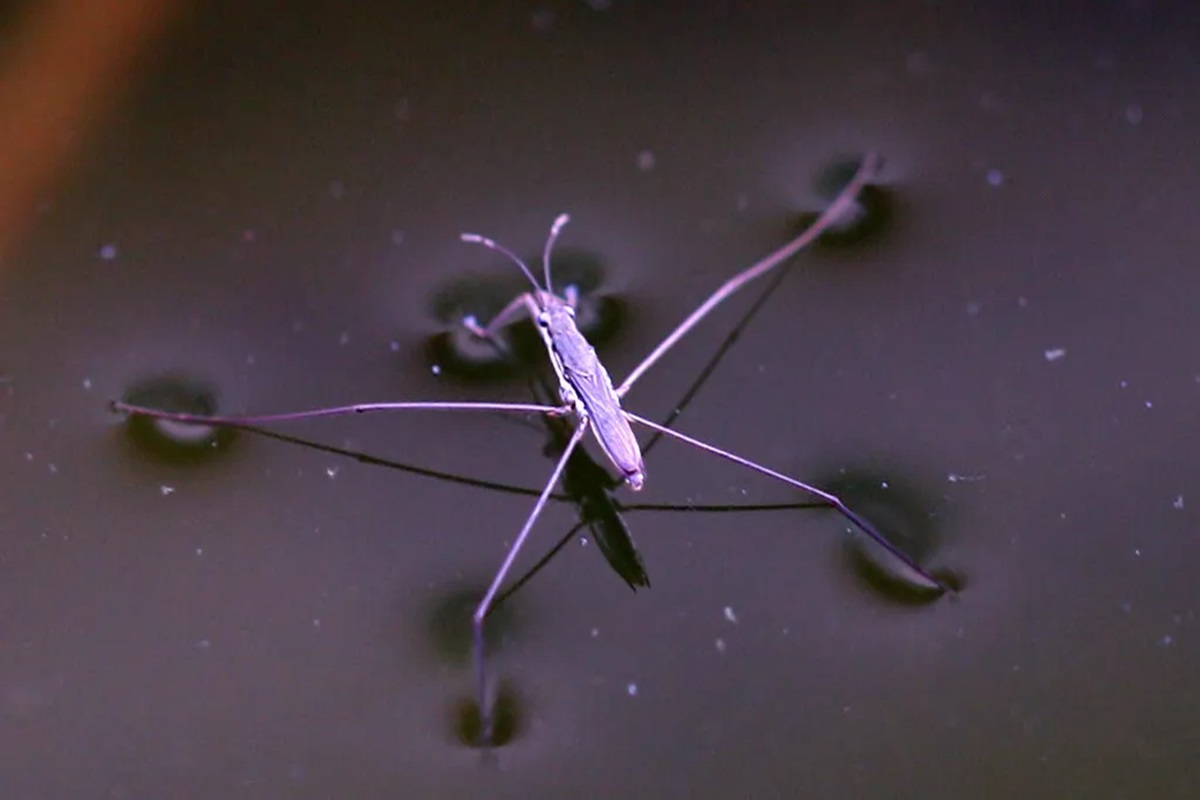Water striders are fascinating insects that live on the surface of water. They have long legs, ranging from a few to over 100 millimeters, which allow them to stay afloat without sinking. These legs create dimples on the water’s surface, and heavier water striders create deeper dimples that generate a stronger upward force, supporting their bodies.

When water striders need to escape from predators lurking beneath the water, they perform an incredible feat—they jump upward at an astonishing speed of over 1 meter per second within just 10 to 20 milliseconds. They achieve this without breaking the water surface, thanks to their unique leg movement. The water striders move their legs rapidly downward against the water surface, creating mini trampolines with the deep dimples. This action propels them upwards swiftly.
Until recently, scientists believed that all water striders jumped in this manner. However, recent research focused on the world’s largest water strider, Gigantometra gigas, and other large water striders weighing about 80 milligrams or more, has revealed a different jumping mechanism. This giant water strider breaks the water surface when its legs push downward during a jump. Surprisingly, this unique behavior allows them to achieve the same impressive speed as their smaller counterparts.
The research team filmed high-speed videos of the giant water striders in their natural habitats and transparent water containers to understand this mechanism. They found that when the legs penetrate the water surface, they create a layer of air around them due to the presence of long hairs on the legs. As the legs move through the water, they experience a resistive force called drag, similar to how an oar propels a boat. This force pushes the giant water striders upward during the second phase of their jump.
The researchers developed a mathematical model to understand this behavior better. They discovered that the giant water striders’ weight is a key factor; they are too heavy for the usual non-breaking water surface mechanism to work effectively. By breaking the water surface and utilizing the drag force, these large water striders can achieve the necessary speed to escape from predators.
This discovery highlights that water striders of different sizes employ distinct jumping mechanisms. It is intriguing because closely related species can use different physical mechanisms based on their size, even though they perform the same behavior to evade predators.
Leave a Reply